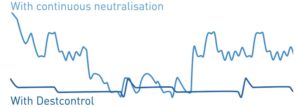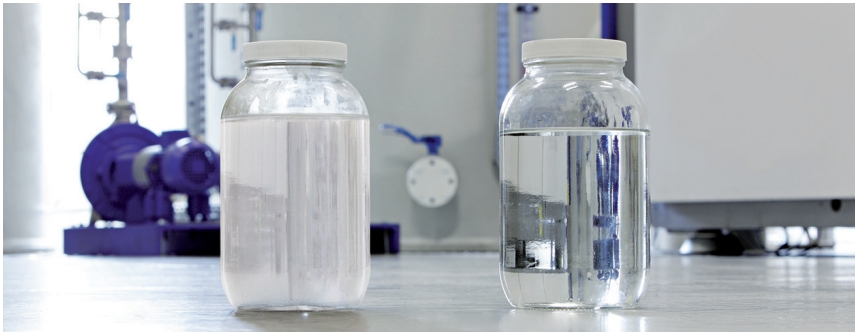Zero liquid discharge - Mubea opts for economical and future-proof evaporator technology

Zero liquid discharge - Mubea opts for economical and future-proof evaporator technology
Sustainable and economical – these were Mubea China’s demands for its new wastewater treatment. So the leading manufacturer of suspension springs for the automotive industry opted for an H2O vacuum distillation system.
Mubea uses water-based processes such as degreasing and zinc phosphating in its springs production, in order to improve anti-corrosion properties. The resulting wastewater contains heavy metals and phosphates and may not be discharged into the sewerage system. Particularly strict phosphate limits are in force at their Taicang site, which classical chemical/physical wastewater treatments cannot reliably meet.

These were further exacerbated by the new GB 21900 emission standard, which came into force from 1 August 2008. As a result, only wastewater recycling through vacuum distillation proved eligible as the single technically feasible and simultaneously economical alternative.
Recycling with the VACUDEST
Using a wastewater sample from Mubea, H2O developed a suitable treatment process at its in-house Sustainable and economical – these were Mubea China’s demands for its new wastewater treatment. So the leading manufacturer of suspension springs for the automotive industry opted for an H2O vacuum distillation system. The VACUDEST XL at Mubea in China treats degreasing and zinc phosphating wastewater in an economical and sustainable manner. application centre for wastewater-free technology. Additional considerations of operating costs, and the vast savings potential from avoiding additional disposal costs, were at the forefront of the selected wastewaterfree production design.
What does the chosen technique look like in close-up? The wastewater produced is collected in a storage tank. From here, it is pumped to a neutralisation stage, in which the pH is preset to the desired value. After that, the VACUDEST treats the wastewater. The result is that the contaminants are separated into concentrate and clean, oil-free distillate suitable for reuse.
Vacuum distillation operating principle
Vacuum evaporators are based on the simple principle of separating substances according to boiling point deviations. The industrial wastewater is evaporated. All substances with a boiling point higher than water remain in the evaporation residue. This includes heavy metals, salts, oils, fats or surfactants. Because the water content is evaporated, the residue reduces to between 0.5 and 5 percent of the original wastewater volume. The rising steam, also known as vapour, is virtually free from impurities. After condensation, it can be recycled in the production process as process water. Production therefore becomes wastewater-free.
Two additional patented H2O technologies improve the distillate. The first is the dest control pH value dosing. It continuously monitors the distillate pH value and doses lye directly into the heat exchanger as required. The advantage of this is that unwanted acid components do not get into the distillate and the desired pH value remains consistently stable. Additionally, the patented H2O GmbH Clearcat module is used to give oil-free distillate. This system guarantees distillate hydrocarbon values of below 10 mg/l. After this, the crystal-clear distillate is stored in a distillate collection tank and pumped back into production for use in rinsing.
Values in distillate
Conductivity: 50 µS/cm Total hydrocarbons: 3.3 mg/l

Advantages of recycling with VACUDEST evaporator
- Good distillate quality allows reuse in rinsing processes
- Saves fresh water
- Cost savings from freshwater desalination, as the distillate is salt-free
- Vastly reduced disposal costs
- Secure, fully automated process
- High energy efficiency through advanced vapour compressor technology
- Simple system operation via integrated Vacutouchcontrol
Experiences at Mubea
The quality of the produced distillate and the entire process have fully met the high expectations at Mubea. Mario Reinhold, technical manager at Mubea Taicang, is delighted: “The vacuum distillation system helps us to save fresh water and thus protect our environment. The evaporator is extremely reliable and, thanks to water recycling, we have been able to significantly reduce our operating costs.”
Vacuum distillation operating principle
Vacuum evaporators are based on the simple principle of separating substances according to boiling point deviations. The industrial wastewater is evaporated. All substances with a boiling point higher than water remain in the evaporation residue. This includes heavy metals, salts, oils, fats or surfactants. Because the water content is evaporated, the residue reduces to between 0.5 and 5 percent of the original wastewater volume. The rising steam, also known as vapour, is virtually free from impurities. After condensation, it can be recycled in the production process as process water. Production therefore becomes wastewater-free.

